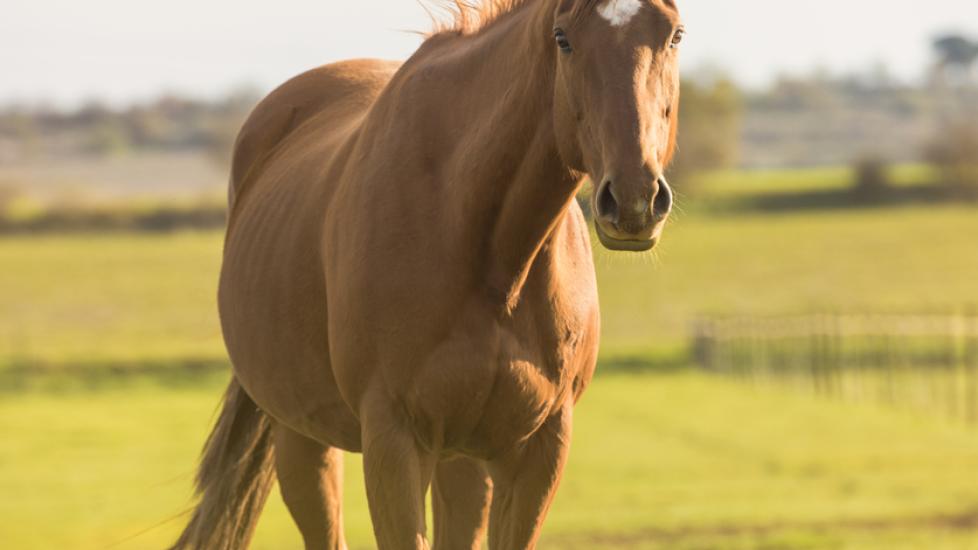English Thoroughbred
Reviewed for accuracy October 26, 2022.
The English Thoroughbred, which was bred for the purpose of wither riding or flat and jump racing, originated in Britain in the mid-18th century. It is said that no other horse breed can beat the Thoroughbred in speed and distance at the same time.
Physical Characteristics
The English Thoroughbred's physical characteristics can be directly attributed to its ancestors. Bred for speed, its withers are prominent, and its back is long; the loins are well attached to the croup, which can be sloping. The Thoroughbred's chest, meanwhile, is wide and high, as is its tail, and its shoulders are sloped and muscular. The Thoroughbred's legs, which are often its meal ticket, are long with large mobile joints. Its forearms are also long, but muscular. The horse’s average height ranges from 15 to 17 hands (or 60 to 68 inches).
The English Thoroughbred has thin skin. The coat colors are usually bay, dark bay, chestnut, black, or gray. Even though they are rare, roans with white markings on the face and legs do occur.
The head is usually small and elegant with a straight profile. Its ears are well proportioned and rather active, and its eyes are wide and alert. The Thoroughbred also has flaring nostrils and a long straight neck.
Shop Horse Products
History and Background
Many attribute the success of American horse racing to the prominence of the English Thoroughbred. Though flat racing had existed in England by the mid-1100s, the speed and agility of three stallions imported into England from the Middle East in the late 17th and early 18th centuries led to much of the popularity of horse racing we have today. In fact, all modern Thoroughbred (whether of the English or American type) can be traced back to these three famous sires: Darley Arabian, Byerley Turk, and Godolphin Arabian.
The development of this horse, however, began even earlier with the importation of great numbers of Iberian, Barb, and Turkmenian horses from Spain, Italy, and Africa in a period spanning over 665 years. The Thoroughbred may also have been influential in the development of other modern horse breeds, including the American Quarter Horse and Morgan.
It is said that three basic types are reflected in modern Thoroughbred: the Sprinter, a tall horse that has a long body and exhibits great speeds; the Stayer, which is a smaller horse with a shorter body and good stamina; and the Middle Distance Horse, which is very well-suited to cross-country events and distinguished by its well-sloped shoulder, shorter back and sloping croup. It is important to note that the Thoroughbred does not exhibit a standard morphology due to its composite breed.
The General Stud Book was started to monitor bloodlines in 1791; it still keeps records to this day, although the American Jockey Club now monitors thousands of US pedigrees yearly, helping breeders choose appropriate lines for their racing prospects.
Today, the English Thoroughbred is primarily bred for racing under saddle at the gallop, but it also competes in eventing, show jumping, and dressage.
Temperament
The Thoroughbred has been bred over the centuries for speed and endurance; with this, it has developed a reputation for being “hot” or difficult to control. This is typically due to training methods in the racing industry; with proper attention and time, these horses are smart and can become highly attuned and responsive rides.
Care and Health
Thoroughbreds are more prone to certain types of injuries and disease processes, primarily due to their athletic careers. Bone chips, fractures, soft tissue injuries, and other trauma are common with repeat high-energy races; arthritis typically develops over time in these stressed joints. Thoroughbreds also often have thin soles and a habit of growing long toes with underrun heels. This may predispose them to a variety of feet-related issues, so therapeutic trimming and shoeing with a qualified farrier is often required.
Featured Image: iStock.com/Alberto Duran Photography
